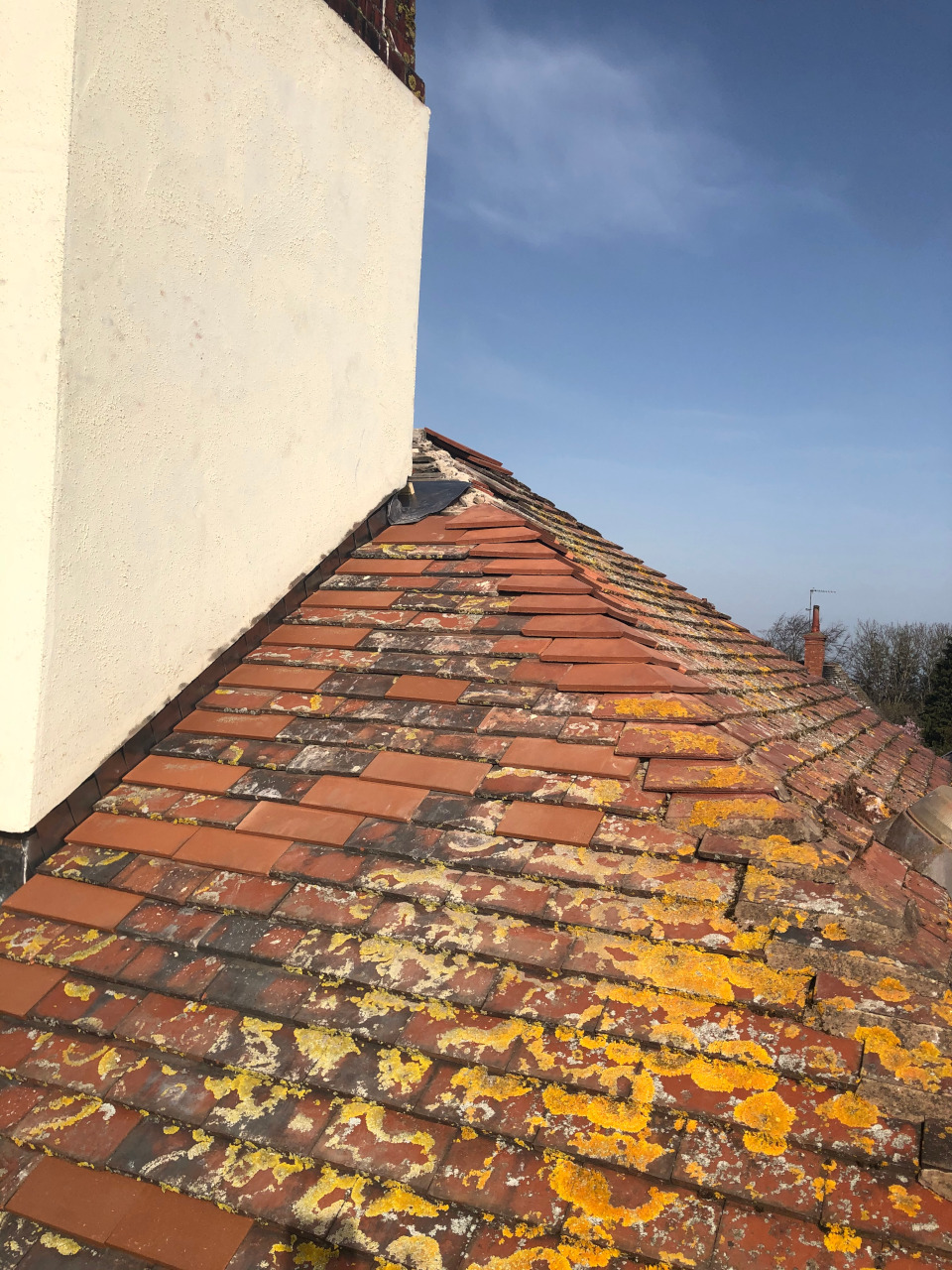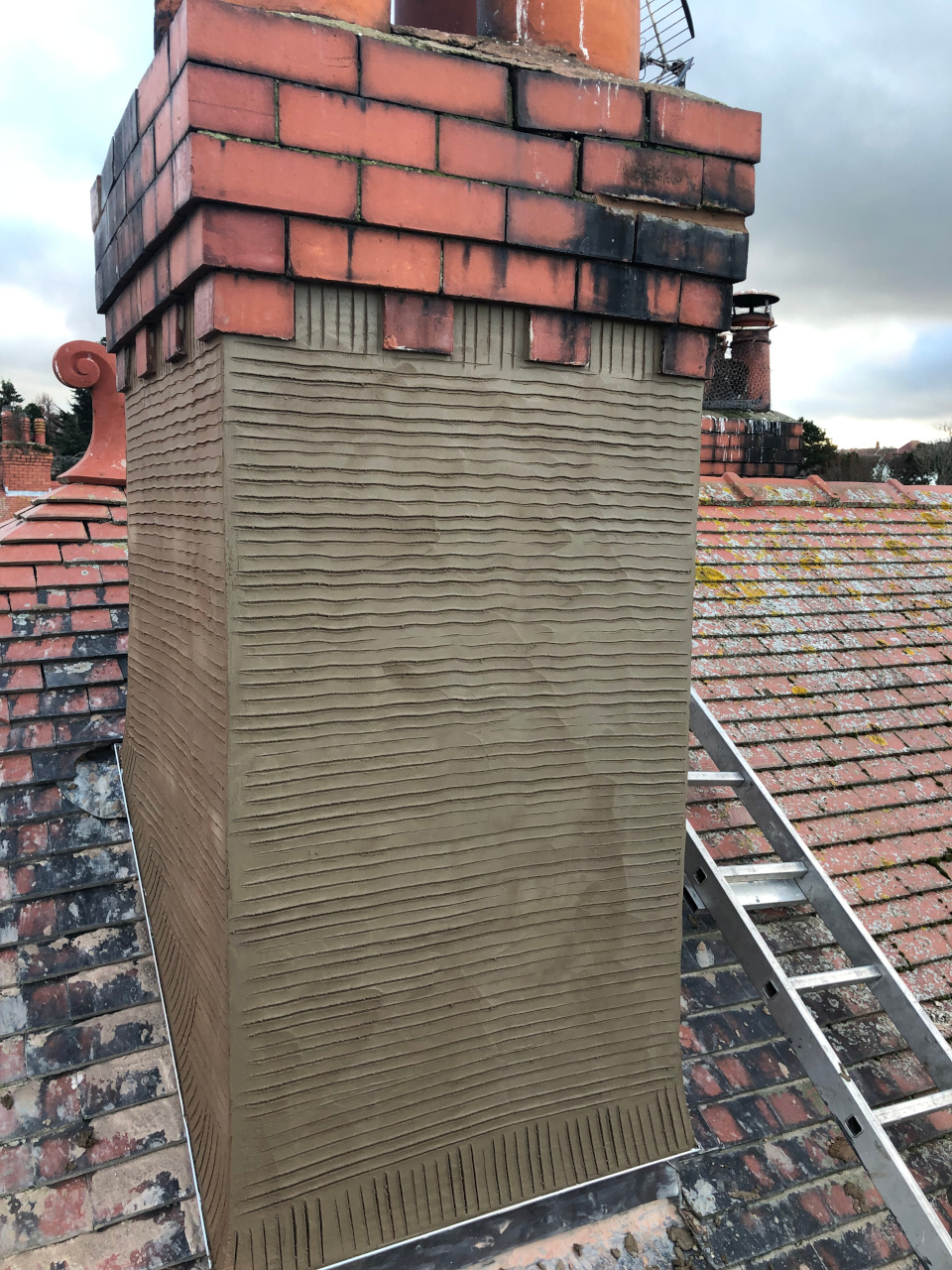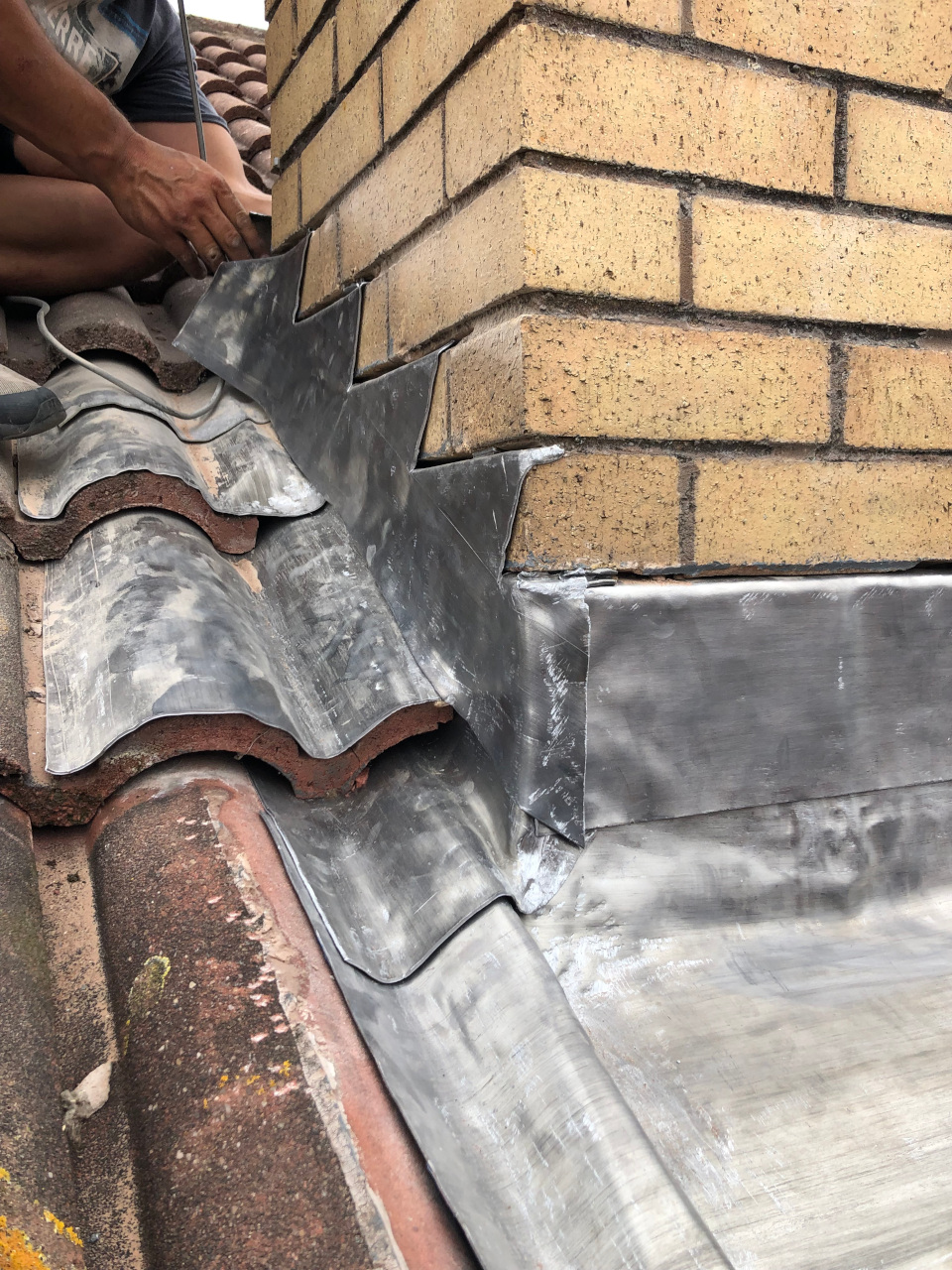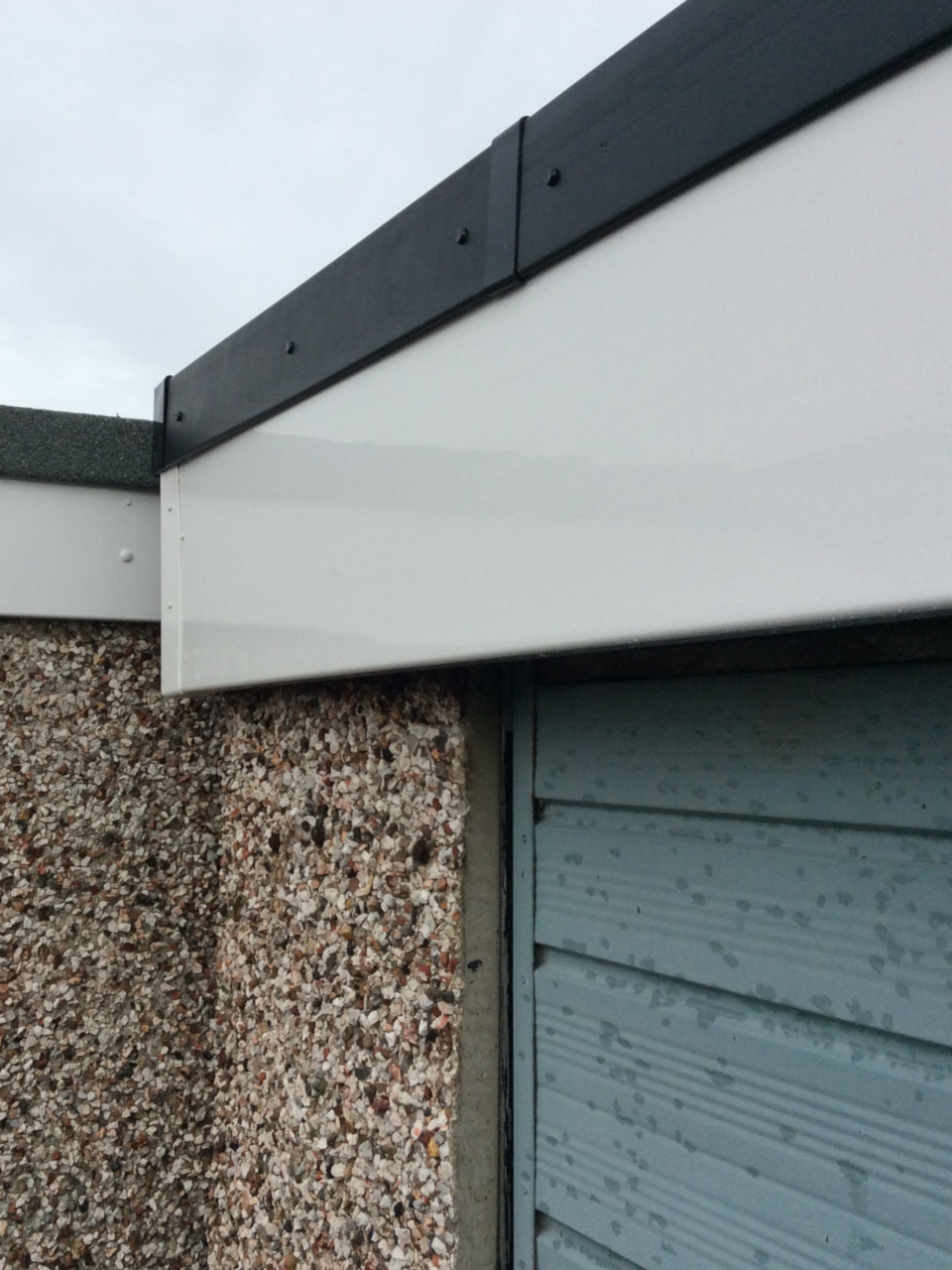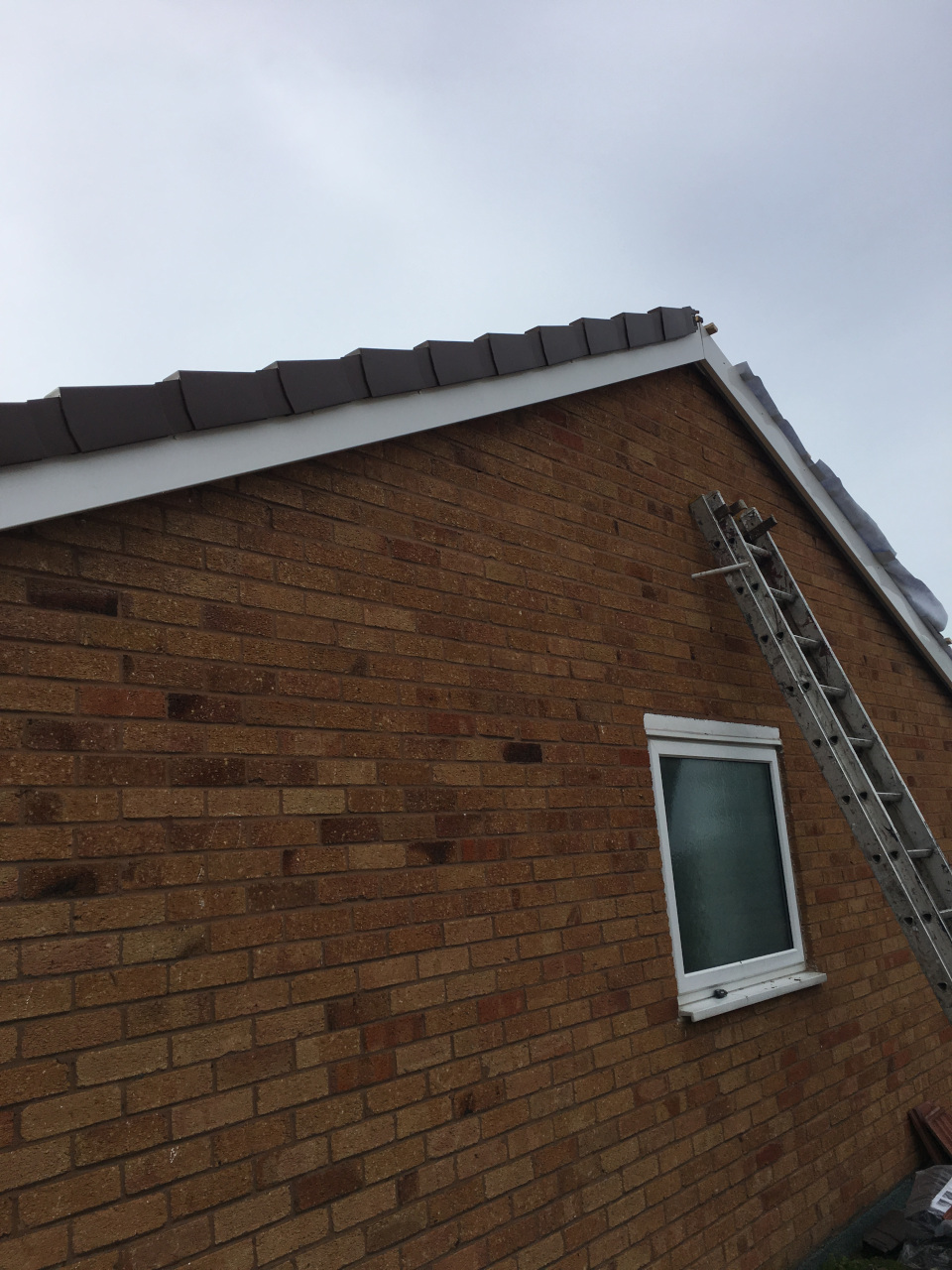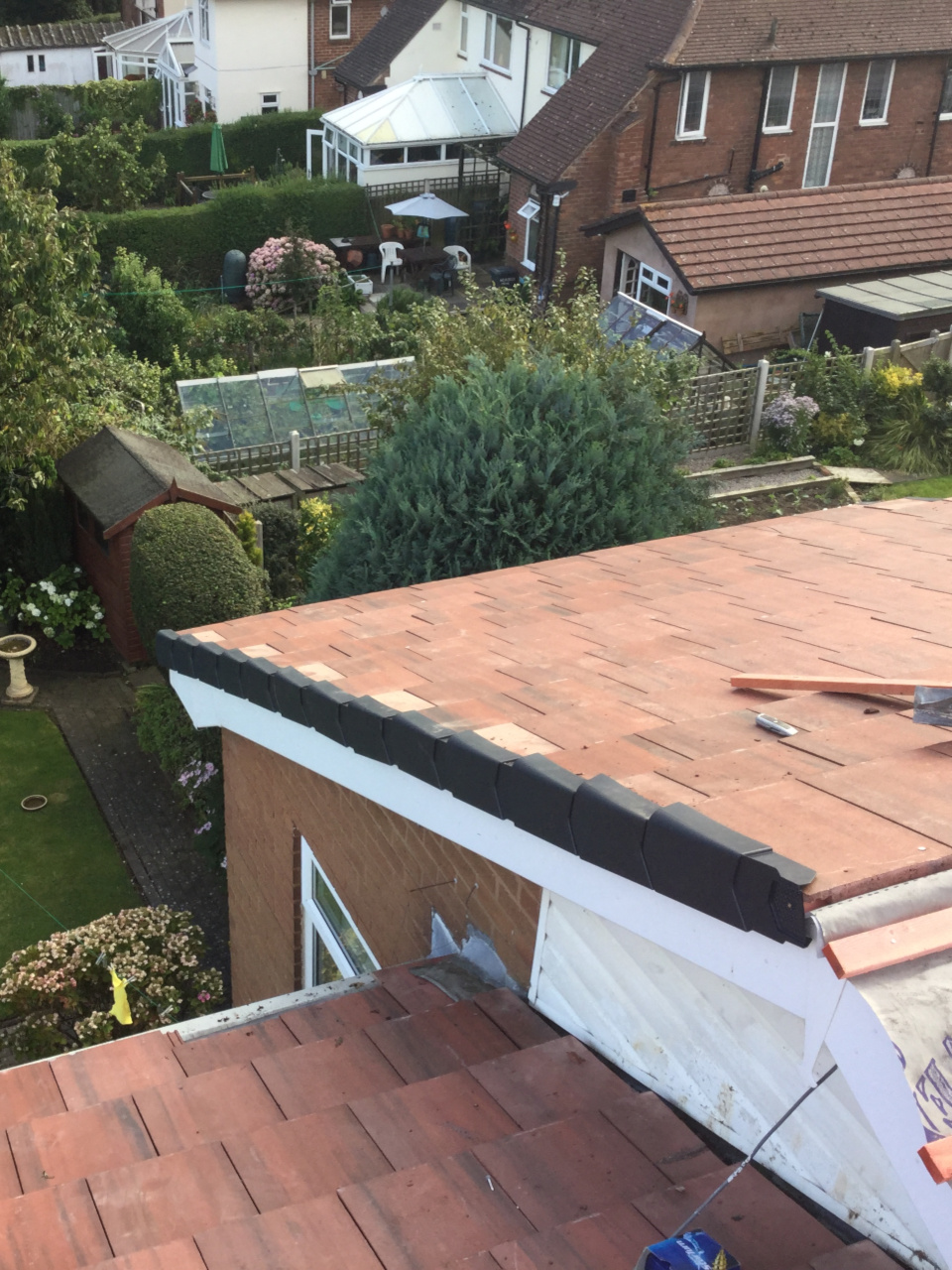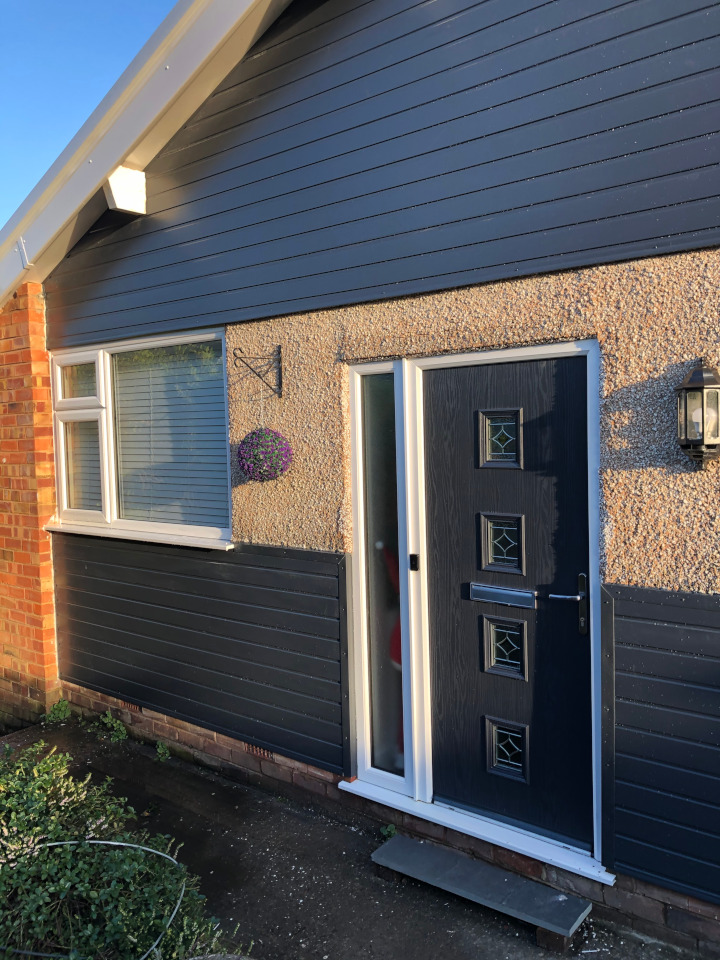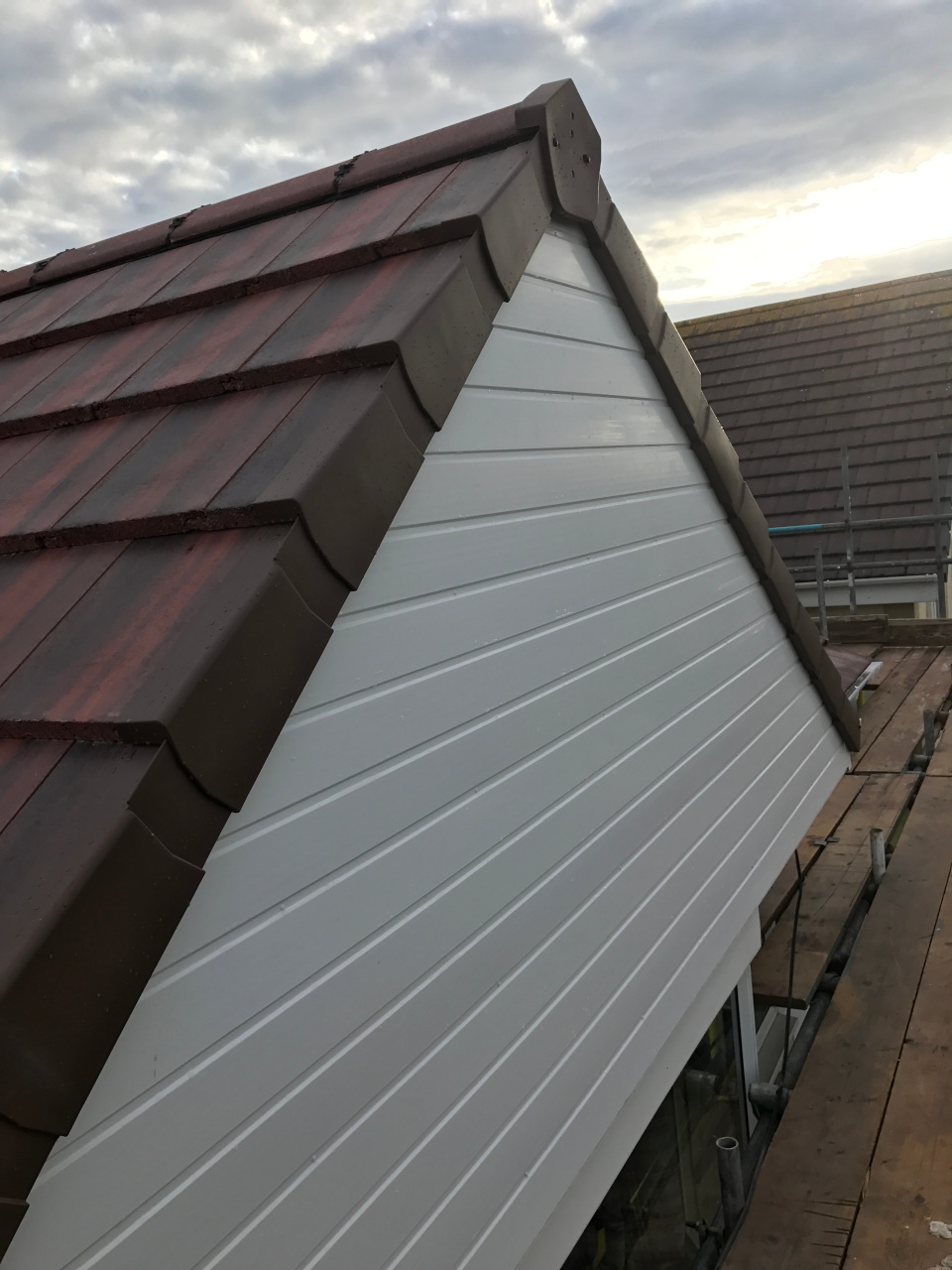ROOF COMPONENTS
➤ Chimney repairs
➤ Leadwork
➤ Fascias and soffits
➤ Gutters and downpipes
➤ Dry ridge systems
➤ Dry verge systems
➤ Claddings
Chimney repairs
Leadwork
Lead sheet is used in roof applications to seal joints from the weather. It is durable, inert and malleable. With care it can be formed in to two and three dimensional shapes and lapped to ensure rain shedding at critical joints in the structure.
Lead can be incised into brickwork joints and even soldered if necessary.
Replacement fascias & soffits
Gutters & downpipes
uPVC replacement rainwater goods are available in six colours, the most common being white, light brown, dark brown, black and grey.
Both gutters and down pipes are available in round or square section. As with all modern uPVC products, they are designed to withstand all weather conditions and are maintenance free.
Dry ridge system
Current UK Building Regulations require that all new pitched roofs have a mechanically fixed dry ridge.
This means that the ridge tiles must be screwed to the roof timbers. Traditionally, ridge tiles were bedded in mortar.
Though not compulsory for roof repairs, if the existing ridge tiles need to be replaced, then installing a mechanically fixed system is highly recommended. The dry ridge system also provides for the installation of water vapour release from the roof space. See stack effect.
Dry verge system
Dry verge roofing is an effective and more durable alternative to wet verge roofing. Rather than using mortar, interlocking caps are used which fit over the edge of roof tiles.
As with the dry ridge system these are screwed into position instead of being bedded in mortar.
Our dry verge components are fully compatible with British Standard BS8612.
Cladding
uPVC is an ideal material due to its durability and hard wearing properties. Used to replace older plastics or traditional wood cladding, fascias and soffits, unlike wood uPVC won’t rot or corrode despite constant exposure to the harsh British elements.
There's no more painting, preserving or staining; no more warping rotting or decaying; no problems with water seepage, insect infestation or grain variety - simply trouble-free surfaces which add style and character to both the inside and outside of a building.
Marine grade fastenings are used to ensure the longevity of any exposed fixings.
Our uPVC claddings have a 'Class 1' fire rating as specified by British Standard BS476. This is the highest (ie safest) surface spread of flame classification.


